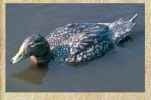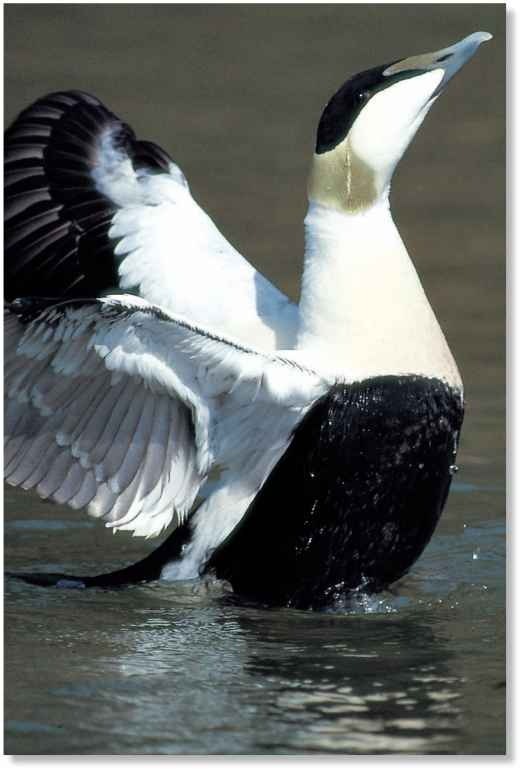ORDER
Anseriformes
FAMILY
Anatidae
GENUS & SPECIES
key features
• A hardy bird that spends most of its life at sea, living on cold, storm-tossed waters
• Expert diving skills and a hefty bill enable the eider to feed on shellfish on the seabed
• Uses its own soft, down feathers plucked from its breast to make a snug lining for its nest; the down is “harvested” by humans for use in quilts and sleeping bags
where in the world?
On coasts from Alaska, across northern Canada and northeastern U.S. I to Greenland, Great Britain, Scandinavia and eastern Siberia; birds in the High Arctic and Baltic areas migrate south in winter
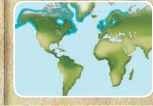
Lifecycle
The common eider spends most of its time in the cold, storm-tossed waters of northern seas, buoyantly bobbing among rough wave crests or diving below the surface to feed.
HABITAT
The common eider is essentially a seaduck, spending most of its life offshore along cold, bleak and inhospitable sea coasts, from the North Atlantic and Pacific, north to the High Arctic. It sometimes flies to inland lakes and rivers, but visits only those waters that are a short distance away from the coast.
Rarely venturing far out to sea, the common eider prefers to remain close inshore, seeking the shelter of protected bays, inlets and estuaries.These sheltered areas also offer ideal breeding sites, as the common eider tends to nest very close to the ► Out to sea water; just out of range of A “raft” of eider duck off the pounding surf.the rocky coast of Maine.
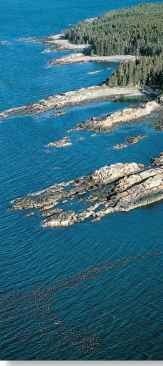
BEHAVIOR
Common eiders gather in large flocks on coastlines; they spend most of their time resting between feeding sessions. The sociable birds also come onto land to loaf about and preen. When moving from place to place, they usually fly in single file or in loose strings.
Eiders winter mainly within their breeding range out at sea, although eiders from the Baltic and Arctic areas may be driven to coasts farther south when the polar seas freeze over
► Communal living Eiders gather in flocks, sometimes thousands strong.
FOOD & FEEDING
The eider feeds on a variety of shellfish (mussels, whelks, cockles and crabs), which it finds on the seabed. At high tide, the eider dives beneath the waves to grab shellfish in its powerful bill or, as the tide ebbs, it dabbles for them in the shallows.
The eider cracks open large shellfish with its bill, but swallows small ones whole. The gizzard (part of the stomach) grinds down the shells of the food that it swallows whole, releasing the soft flesh inside.
Shellfish form the basis of the eider’s diet, but it also occasionally eats small fish. While incubating her eggs, a female may nibble away at plant matter that’s within reach of the nest, such as berries, seeds and leaves.
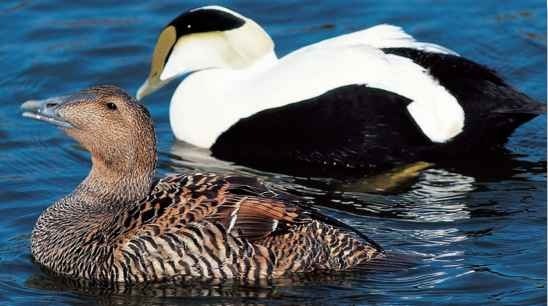
A Seafood specialists
After diving to the seabed for food, the ducks rest to digest their meal. Eiders also up-end to catch small fish.
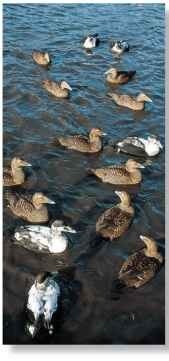
CONSERVATION
In parts of the eider duck’s range, its down feathers are harvested at nesting time, when the bird plucks out its down to line its nest. “Eider farmers” collect the down, which has excellent insulating properties, and sell it for use in clothing and quilts.As a result, the bird is carefully protected. Artificial nesting sites are provided and the eider’s predators are controlled. Colonies of up to 10,000 birds have become established.The world population now stands at over 5,000,000 and the bird is in no danger.
BREEDING
Courtship occurs in flocks. Drakes (males) circle females in the water cooing softly. A female accepts by imitating his display, then allows him to mate with her. The pair goes ashore to find a nest site. Once a site is selected, the pair separates.
Eiders nest in colonies, and egg-laying within a colony is synchronous (most clutches hatch within a short time of each other). Ducklings are active as soon as they hatch; within hours, females lead their young to the sea, where they plunge in, quickly learning to dive and find food. The young are fledged at about 10 weeks.
Nursery group In dense colonies, ducklings gather in groups.
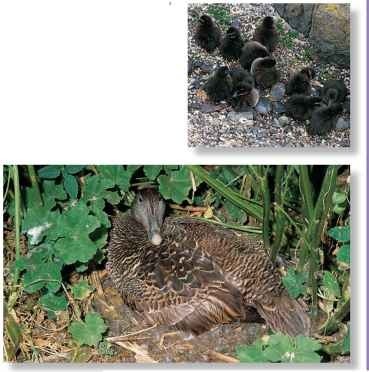
Nest builder Females line their ground nests with grass and down.
DUCKING AND DIVING
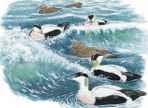
1 Surf…
On rough coastal waters, flocks of common eiders gather to feed on shellfish living on the ocean floor.
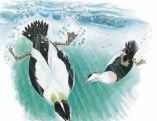
2 Plunge…
Plunging underwater, the birds use their large, webbed feet to propel down to the seabed.
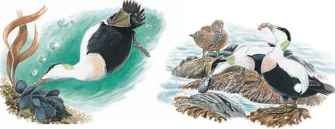
3 Pluck…
Spotting a mussel bed, the eider pulls off a large individual to take up to the surface to eat.
4 Chow down
After a dive lasting just over a minute, the eider surfaces and cracks open its catch.
It’s believed that the common eider inspired the first bird sanctuary. St. Cuthbert, a 7th-century hermit on the Farne Islands off the east coast of northern England, protected them. In fact, the Farne Islands are still a bird sanctuary today.
In the few hours between hatching and reaching the sea, half of a brood may be snatched by predators, such as gulls.
It takes the down from up to 100 common eider nests to fill just one quilt or sleeping bag.
PROFILE
Common Eider
Cold-cheating down feathers insulate the common eider against icy seas and a powerful, shell-cracking bill helps it exploit abundant shellfish.

CREATURE COMPARISONS
In the breeding season, drakes of all four eider duck species are strikingly patterned, but the most spectacular is the king eider (Somateria spectabilis), resplendent in its velvety-black body and rose-tinged white breast.The pale-green and pearl-gray head has a remarkable bright-orange “shield” outlined in black at the base of the red bill.
The common eider lacks the king eider’s colorful head and has a white back, making it appear cleaner cut than the king eider After reeding, both molt into a dark, drab “eclipse” plumage, looking quite different from their courtship dress.
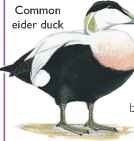

| vital statistics | |
| Weight | 4-5 lbs. |
| Length | 1.5-2′ |
| Wingspan | 2.5-3.5′ |
| Sexual Maturity | 2-3 years |
| Breeding Season | April-July |
| Number of Eggs | 1-8, but usually 4-6 |
| Incubation Period | 25-28 days |
| Fledging Period | 60-75 days |
| Breeding Interval | 1 year |
| Typical Diet | Mainly shellfish; occasionally fish and plant matter |
| Lifespan | 5-6 years |
Related species
• The common eider is a member of the family Anatidae, a large group with over 140 species. The majority are ducks, including the Magellanic flightless steamer duck, Tachyeres pteneres (below). However, geese and swans also belong to the same family.
